I am going to be a bit selfish here, but I think for good reason!
I recently got married (yay) and we wanted to wait a bit to plan our honeymoon; we didn’t want to be planning a wedding AND a trip at the same time. My new bride and I both want to go some place we’ve never been before. While we think we are set on a destination, there are so many fun options to get there and different things to do; I thought I would try to see if any of you had some swell ideas.
I’ve never done something like this before, so I’m not sure if it will work. But it can’t hurt! My idea is to give you all some of my thoughts so far, and see what you think. Maybe I will get 0 comments and be sad, or maybe I will be overwhelmed and no better off, but I am hoping to get a gem or two out of this little experiment! Here we go:
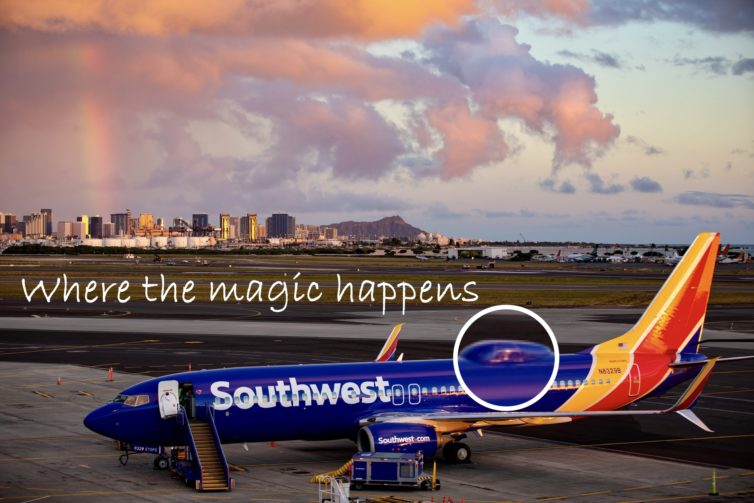
Southwest Airlines’ BYOD IFE is powered by the bump magnified above (A B738 at HNL following the airline’s first Hawaii validation flight in early 2019). – Photo: SWA Media. Edits: JL Johnson
We last looked at the Southwest Airlines BYOD in-flight entertainment (IFE) package back in 2014. At the time, the offering deserved every bit of praise given. But over the past nearly six years, the IFE space has changed a great deal. As a continued frequent Southwest Airlines flyer, when I use their IFE (and in-flight connectivity, IFC) I can’t help but cringe knowing my old review is still out there. Alas, my 2014 piece did not age well, on many fronts.
So let’s set the record straight: How have Southwest’s offerings withstood the test of time?
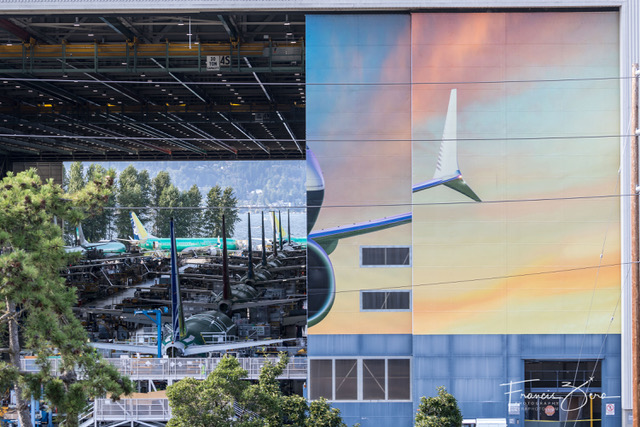
The 737 factory in Renton, WA
If you have been keeping up with the 737 MAX, you know that the news hasn’t been super great about the aircraft. There are many, many stories you can read out there about what has been going on and we are not wanting to re-hash it all. We can all agree that things are not going well, and it will likely still be a while before anyone has a chance to fly on one (saying that you will want to). Since we are a group of aviation fans that try to celebrate aviation, even in negative times, I decided to just share some really awesome shots of the 737 MAX that our Francis Zera recently took. Feel free to share your thoughts on what is going on with the MAX in the comments; otherwise just enjoy the photos!
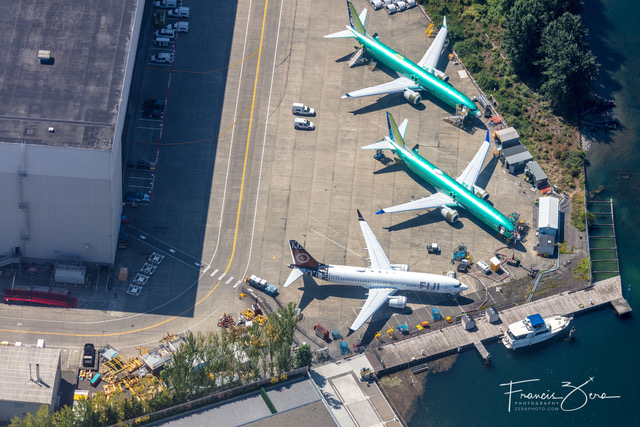
Some 737 MAX aircraft parked in Renton
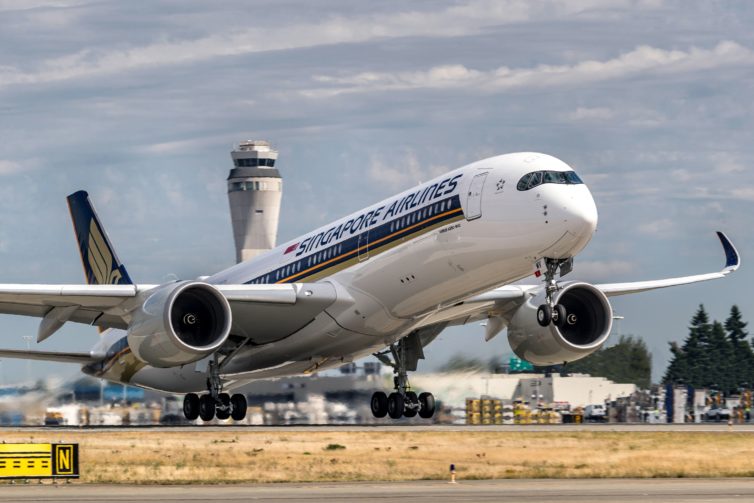
Singapore Airlines Airbus A350-900 takes off from SEA – Photo: Singapore Airlines
The contest has ended and a big congrats to Alex Nieves for winning! He will be giving this model a wonderful new home. Be sure to subscribe to our story email (we shoot you an email when we publish a new story) to make sure you don’t miss the next contest!
I get excited every time a new airline flies out of my hometown airport and I am guessing that you can relate. Especially when it involves an aircraft that is rare for the airport, and it also becomes the longest flight out of the airport. This was the case recently when Singapore Airlines (SQ) started service from Seattle-Tacoma International Airport (SEA) to Singapore Changi Airport (SIN) using an Airbus A350-900.
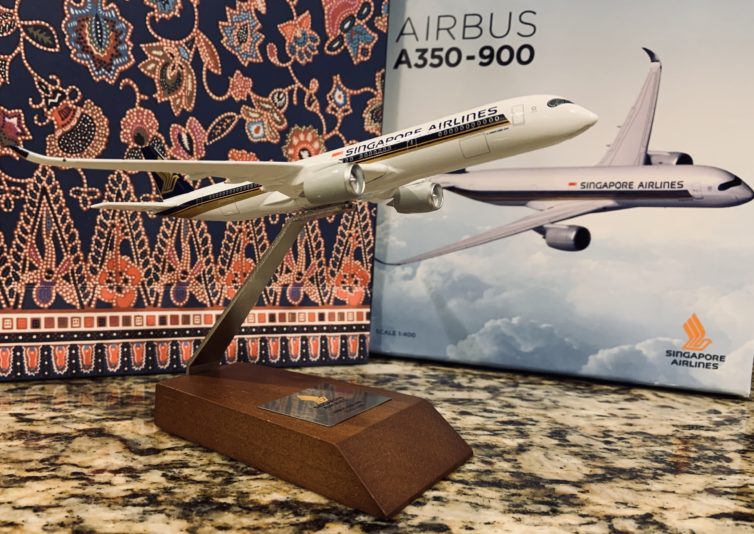
Here is the sweet 1:400 scale Singapore Airlines Airbus A350-900 model you can win!
And I know you are already wondering “How do I win that Singapore Airlines Airbus A350-900 model? I bet he is going to make me read his story and look at photos before telling me the deal.” #nailedit Keep on reading…
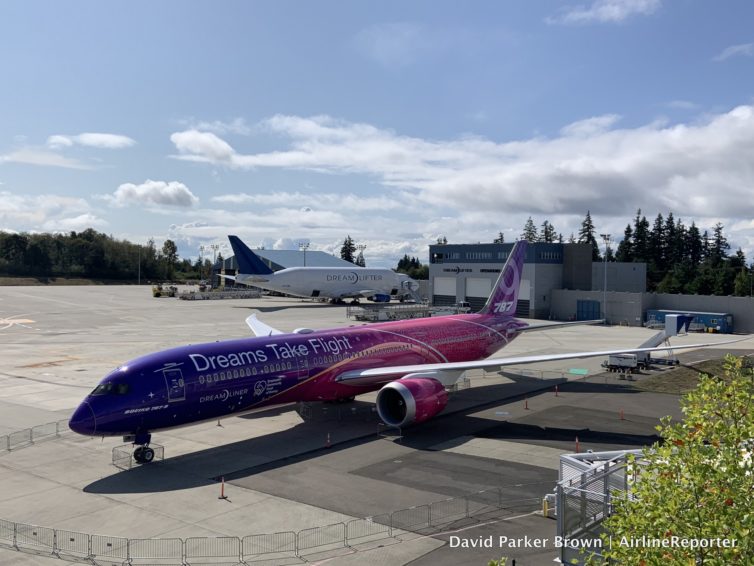
The 787-9 Dreamliner parked next to the Boeing Future of Flight and a sweet Dreamlifter!
A while back, I started to see photos of a purple and pink 787 and wondered what the heck it was all about. Then I saw that people had the chance to get up close and personal with the plane at the Boeing Future of Flight, and I realized that I needed to figure out the full story. It turns out that the special livery is inspired by the Employees Community Fund (ECF) of Boeing. And what is ECF, you might ask? Good question. According to Boeing:
“Since 1948, ECF has funded approximately $1 billion to local communities across the United States. The ECF has 20 chapters across Boeing, giving employees an opportunity to make a difference where they live and work. Each chapter is managed by local employees who make grants based on the needs of their communities. The special livery celebrates the commitment and generosity of our employees in their local communities.”
-
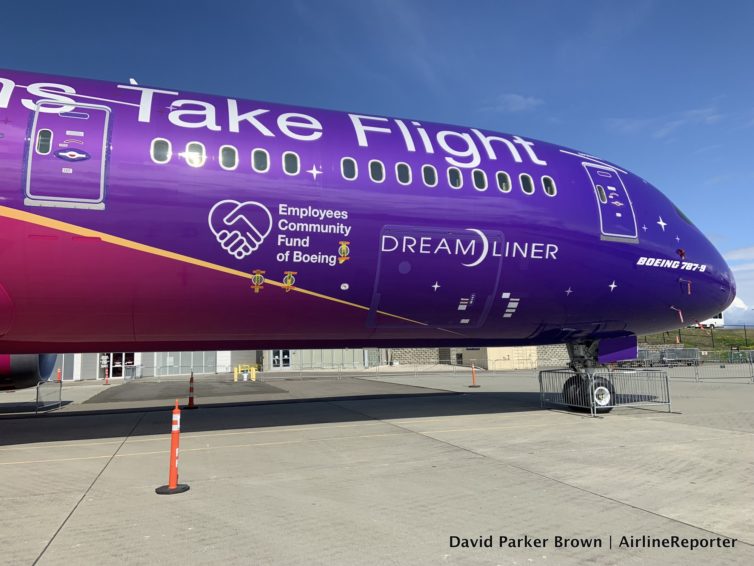
-
The ECF design is mostly a big decal.
-
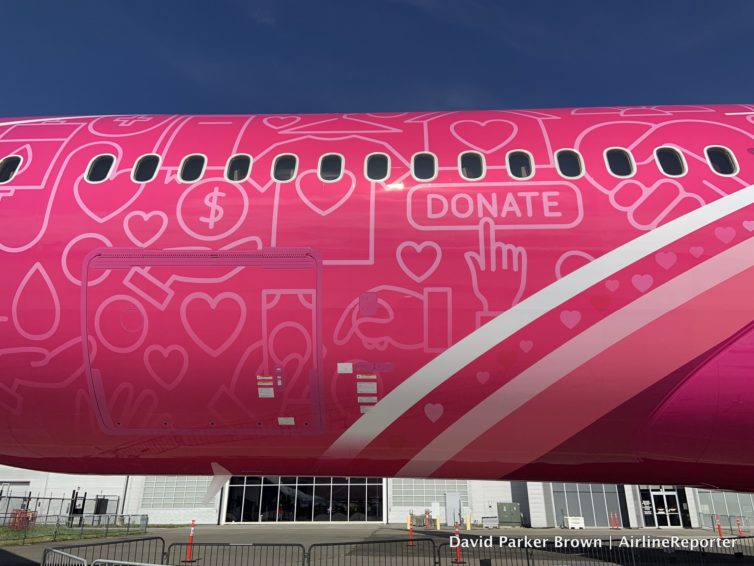
-
The fun graphics near the rear of the 787.
I would say that is a pretty worthy cause to support this unique livery. This is also special, since it is not actually all paint, but is comprised of the largest decal ever on a composite aircraft. Boeing has certified the decal technology, so now airline customers can start using them. I am hoping it means more special liveries and please, oh please, I hope it means less European white designs.








